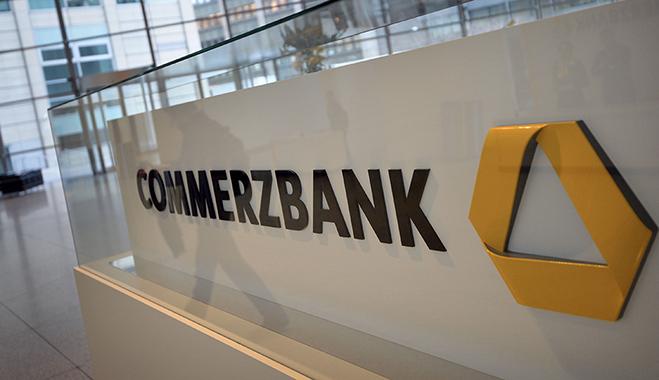
Frankfurt-headquartered Commerzbank has set new asset-reduction and loan-loss provision targets after its second-quarter profit more than doubled from €74m last year to €257m in the first half of 2014. This is particularly good news for the bank, which has been struggling to recover from the financial crisis and is considered one of the key banks the ECB will target for potential closure when it takes on regulatory oversight of the 150 biggest European banks this autumn.
Commerzbank will cut unwanted assets to around €67bn by the end of 2016, which is considerably more than the previous target of €75bn, the firm said in a statement. Provisions for bad debt in 2014 will be ‘well below’ the 2013 level, the bank added.
The bank said that revenues in the private customers, Mittelstandsbank and Central & Eastern Europe segments had lifted thanks to successful growth strategies and that lending volume in the first six months of the year was up by seven percent when compared to the same period last year. Consequently, net income rose to €100m from €40m in 2013.
Commerzbank’s finances are under scrutiny by the ECB, which is reviewing the balance sheets of Europe’s biggest banks
Commerzbank’s finances are under scrutiny by the ECB, which is reviewing the balance sheets of Europe’s biggest banks and conducting stress tests before taking over as their supervisor in November.
As such, Commerzbank is expanding lending to German consumers and companies while winding down soured shipping and real estate assets as part of an €18.2bn bailout. In June, the firm agreed to sell €5.1bn euros of commercial real-estate loans in Spain and Japan and non-performing loans in Portugal, including €1.4bn of loans that the bank classified as non-performing. The sale will significantly reduce the firm’s risk-weighted assets.
Looking ahead, Commerzbank’s CFO, Stephan Engels said “We will continue along our growth path in the Core Bank, and we will do so with a particular focus on the lending volume in the Private Customers and Mittelstandsbank segments. At the same time, we will continue with our value-preserving run-down strategy in the Non-Core Assets segment”.
The firm also said it will cut commercial real estate and shipping assets at its non-core unit, which bundles holdings set for sale, to about €20bn by the end of 2016. All in all, this is crucial news for Germany’s second-biggest lender. A potential closure could have been a hard hit for the German economy and European financial sector. With this turnaround, it would seem that everyone can breathe a temporary sigh of relief.


